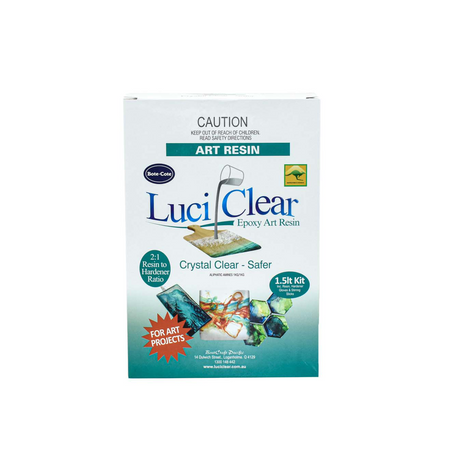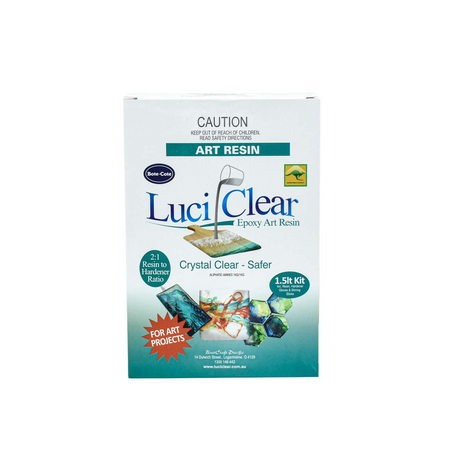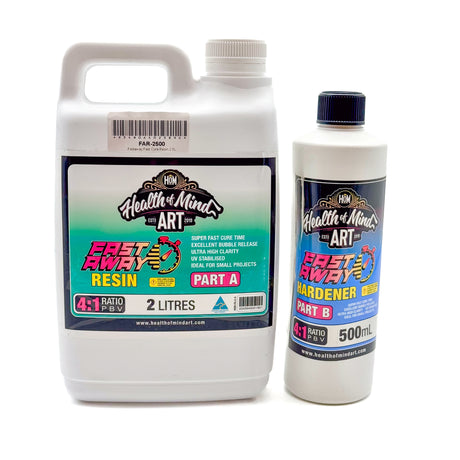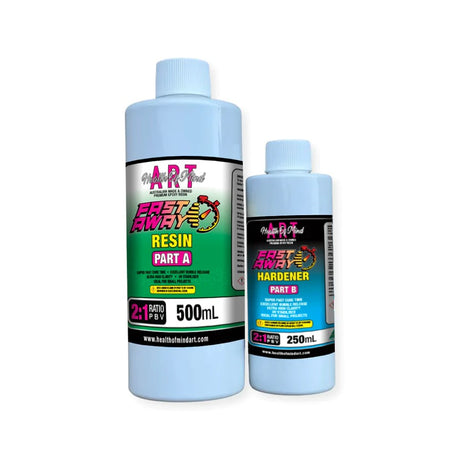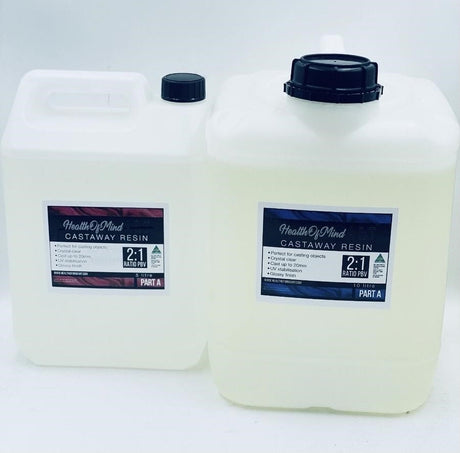Health Of Mind Art
Health of Mind Art Fastaway Fast Cure Resin for Casting
From $49.90Unit price /UnavailableIn stockHealth Of Mind Art
Health Of Mind Art Cast Away Ultra Clear Art Resin
From $49.90Unit price /UnavailableIn stockHealth Of Mind Art
Health of Mind Art Pure Booster Suits Pure Glass Resin 25mL
$21.90Unit price /UnavailableVery low stock (4 units)
High-Quality Art Resins for Creative Crafting and Woodworking Projects
Art resins offer an incredibly versatile medium for woodworkers, artists, and makers looking to add depth, gloss, and vibrant detail to their work. These specially formulated resins are ideal for creating jewellery, wall art, and surface coatings. Designed to cure crystal clear and resist yellowing, art resins enhance colour brilliance and provide a professional, glass-like finish on a wide variety of surfaces.
Most art resins are two-part systems—consisting of a resin and a hardener—that, when combined, undergo a chemical reaction to solidify. This makes them perfect not only for decorative work but also for sealing tabletops, embedding objects, and casting moulds. With various pour depths and working times available, artists and woodworkers can choose the right formula based on their project's needs.
High-quality art resins are engineered to be UV-resistant, self-levelling, and low-odour, making them suitable for use in workshops, studios, and even home settings with proper ventilation. When mixed correctly and poured in ideal conditions, they cure to a hard, durable surface that can be sanded, polished, or painted over. Many brands also support colour additives such as pigments, dyes, and metallic powders for custom artistic effects.
For the best results, users should measure components precisely, mix thoroughly, and avoid working in excessively humid or cold conditions. Bubbles can be managed using a heat gun or torch, and curing should take place on a level surface to avoid uneven finishes. Whether you’re a hobbyist creating resin art or a furniture maker incorporating epoxy into timber designs, art resins are a game-changing material for modern creativity.
FAQs
What is art resin used for?
Art resin is used to coat or embed artwork, fill wood voids, and cast jewellery or decorative items. It provides a glossy, durable, and clear finish that enhances colour and protects the surface.
How do I mix art resin correctly?
Mix equal parts of resin and hardener by volume (or as directed) in a clean container. Stir slowly and thoroughly for 3–5 minutes, scraping the sides and bottom to ensure a full chemical reaction.
What’s the difference between deep-pour and top-coat resin?
Deep-pour resins are designed for thick layers (up to 50mm) and have longer cure times, while top-coat resins cure faster and are ideal for thin, clear finishes on artwork, tabletops, or surfaces.
Can I add colour to art resin?
Yes, you can add pigments, dyes, mica powders, and other additives to customise your resin project. Make sure the colourants are compatible with epoxy resin and are mixed in well for consistent colour.
How long does art resin take to cure?
Initial curing usually takes 12–24 hours depending on the product, pour depth, and ambient conditions. Full curing, where the resin reaches maximum hardness, typically occurs after 72 hours. This is all dependent on ambient moisture and temperature conditions, so be sure to carefully follow the instructions.
What causes bubbles in resin, and how do I remove them?
Bubbles are caused by air trapped during mixing or pouring. Use a heat gun or small torch to lightly pass over the surface after pouring to release bubbles and ensure a smooth finish.
Is art resin food safe?
Some brands of resin are food safe once fully cured, but always check manufacturer specifications. For cutting boards or surfaces in contact with food, ensure the resin is certified food-grade.
Can I sand or polish cured resin?
Yes, once fully cured, resin can be sanded with progressively finer grits and then polished for a glass-like finish. Wet sanding is recommended to reduce clogging and surface heat.
Do I need special safety equipment when using resin?
Use gloves, eye protection, and work in a well-ventilated area. While most art resins are low-odour, avoiding skin contact and inhalation of vapours is important during mixing and curing stages.

